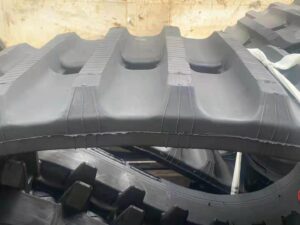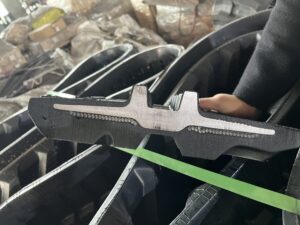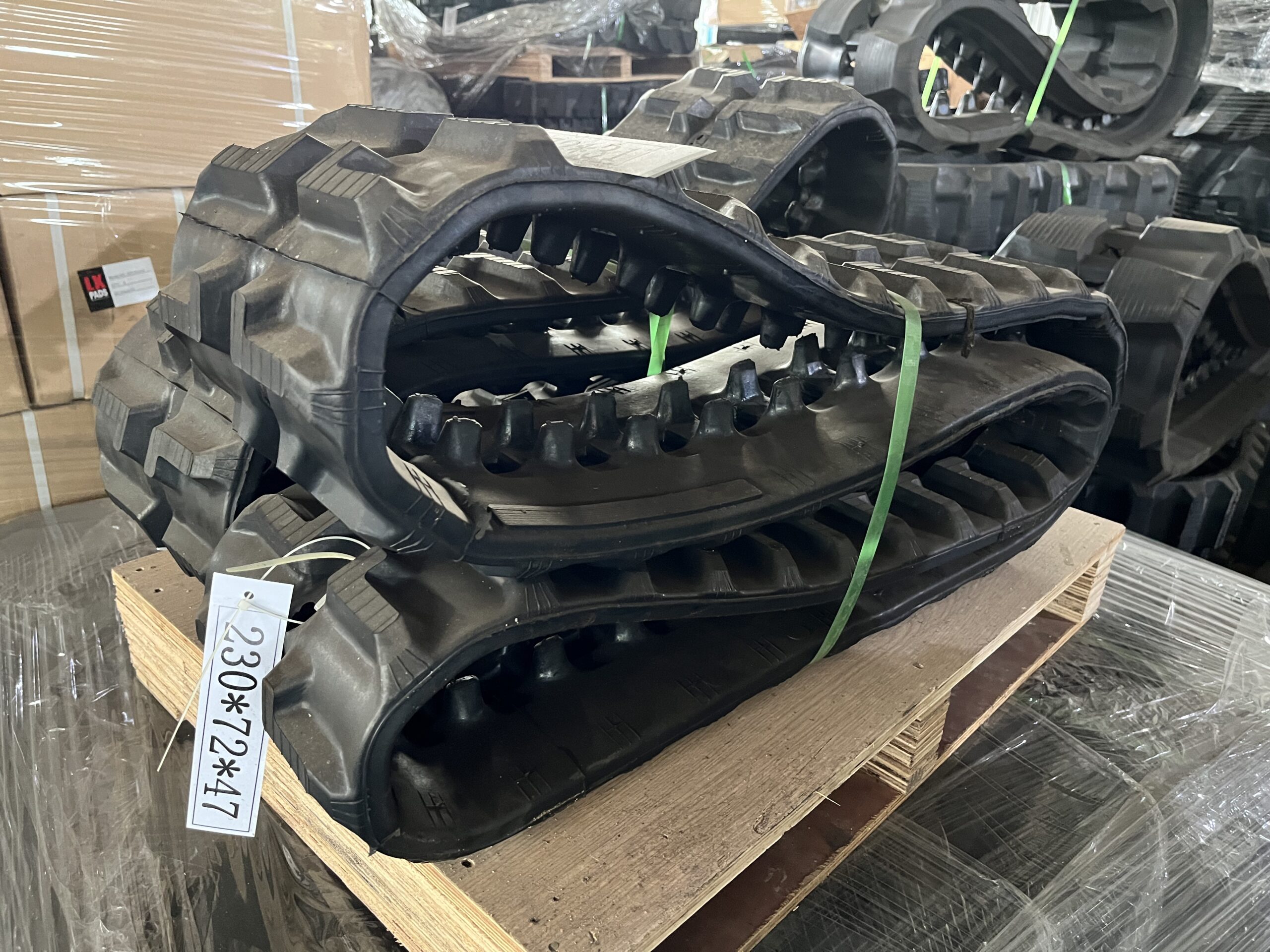Description
The main materials of rubber link include rubber and steel. The advantages of rubber materials include wear resistance, corrosion resistance, high temperature resistance, and low temperature resistance. The tensile strength, hardness, temperature range, service life and other parameters of rubber link determine the performance and durability of the chain. It is suitable for transmission systems of various heavy machinery and equipment, such as excavators, forklifts, agricultural machinery, cranes, etc.
Materials
Rubber materials can be divided into two types: natural rubber and synthetic rubber. Natural rubber is an elastic solid made from natural latex collected from rubber trees and processed through solidification, drying, and other processes. Synthetic rubber is a highly elastic polymer synthesized artificially, which broadly refers to rubber synthesized by chemical methods. Natural rubber materials have a rough surface compared to synthetic rubber materials. But natural rubber has good flexibility and wear resistance.

The rubber material is supported by steel wires, which gives it higher tensile strength and durability.

The model of the rubber link represents the width, pitch, and number of teeth of the rubber link.
1.The width of a rubber link refers to the widest part of the track. Usually measured in millimeters.
2.The pitch of rubber link refers to the distance between adjacent track shoes. Usually measured in millimeters.
3.The number of teeth on a rubber link refers to the number of teeth on the track shoe, usually measured in units.

评价
目前还没有评价